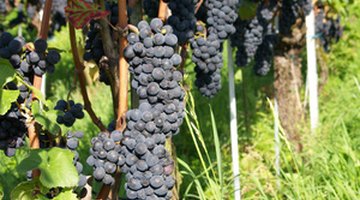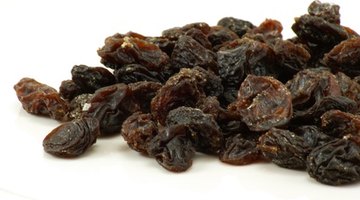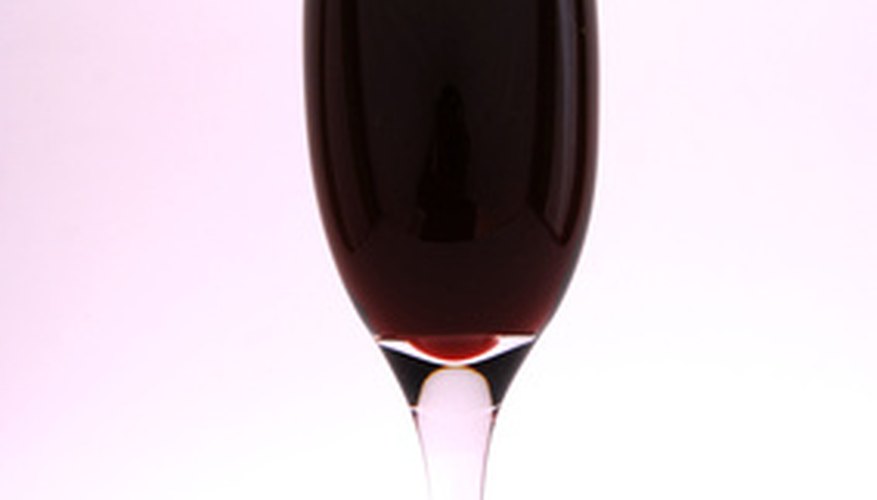Raisin jack wine is a sweet after-dinner drink that you can make yourself from dark or golden raisins. The alcohol content of raisin jack wine depends on the sugar content of the raisins and the fermentation process. During fermentation, yeast turns sugar into alcohol. The absence of oxygen during this process is necessary for optimum alcohol production. Fermentors are designed to have a small opening through which a bung and an airlock are placed, allowing carbon dioxide to escape and preventing oxygen from entering the container. Raisin jack is ready for consumption within two months.
- Raisin jack wine is a sweet after-dinner drink that you can make yourself from dark or golden raisins.

Grind raisins and lemon juice in food blender.

Combine sugar and water in saucepan. Heat to boiling.

Add raisin pulp to boiling water. Allow the mixture to cool to room temperature.
Pour mixture into primary fermentor. Allow it to ferment for six to seven days.
Strain wine and pour liquid into a secondary fermentor. Place a bung and airlock in the top of the secondary fermentor. Fermentation is complete once the bubbling in the airlock stops.
- Combine sugar and water in saucepan.
- Strain wine and pour liquid into a secondary fermentor.
Rack your wine. Remove the airlock gently and set aside. Place a sterilised plastic siphon tube in the top of the wine jug. Place the other end of the siphon tube into the bottom of a sterilised glass jug. Allow the wine to siphon off until only sediment is left in the first jug. Remove the siphon tube and place the airlock in the top of the new jug.
- Remove the airlock gently and set aside.
- Place the other end of the siphon tube into the bottom of a sterilised glass jug.
Allow the wine to sit in a cool, dark location for 30 days.
Add two Campden tablets to the wine. Pour wine into sterilised bottles and cork.
TIP
Siphon wine during racking, rather than pouring it. Siphoning reduces oxidation of wine, which leads to changes in flavour and the quality of the wine. For sweeter wine, boil sugar and water together and let cool. Add sweetened water to wine before bottling. Campden stops the fermentation process. Adding Campden is especially important if additional sweetener is added prior to bottling, as the addition of sweetener could restart the fermentation process.
WARNING
Sterilise all the equipment used for winemaking.
